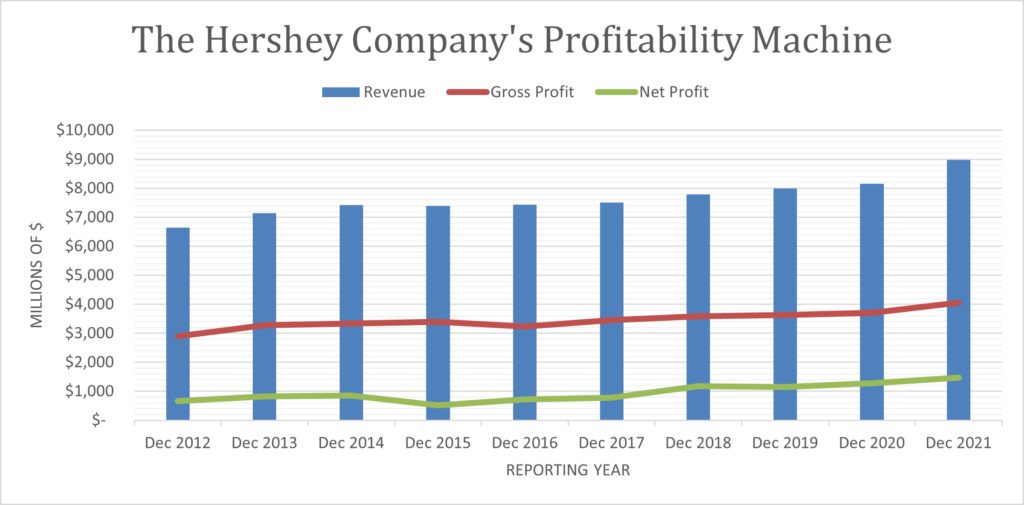The Hershey Company, one of America’s oldest and most profitable food companies, may finally experience private-label competition. Founded in 1894, the Pennsylvania-based food processor has experienced over a century of nearly unrivaled success. Today, Hershey owns about 43% of the American chocolate market, with second place Mars commanding about 25%. This dominance enables Hershey to post nearly unrivaled margins.

Part of the success is due to great products and business execution; the other part includes an industry structure that makes it largely immune from private label competition. Hershey doesn’t face margin pressure from low-cost alternatives. A big component of this is distribution. Unlike other private label categories, candy distribution requires refrigerated trucks and is fairly labor-intensive to stock. It’s why Walmart uses McClane, rather than ordering directly. That underlying reality is why there aren’t many investors clamoring to produce lower-margin private-label alternatives.
Here’s CEO Michele Buck talking about it in its Q1 earnings call. Buck is answering a question about how the company monitors consumers trading down to cheaper alternatives.
And on your other question, we are constantly looking at a couple things relative to the strength of retail takeaway in other CPG categories, as well as our own. And also how much market share is going to private label as that has typically also been a predictor of the consumer. We’re fortunate in our category, not to have significant private label, but certainly in other categories where that’s present we do look at that as well.
She made similar comments the previous quarter:
At the same time, we do know that there’s significant pressure out there, and we just want to really keep our fingers on the pulse of it to make sure that we aren’t missing something. I mean certainly, we’re not a category where there’s a big private label component and people can easily just say, “I’m going to still participate but switch to lower brands.” That’s always been a benefit for us during times like this, but we do understand the pressure consumers are under.
This week, one of the faster-growing convenience stores in America announced it invested in private label offerings—and candy is a prime driver. Casey’s General Stores operates 2,400 locations across the Midwest. Unlike many other retailers, Casey essentially self-distributes 90% of its in-store products from its three warehouses. This gives it an incredible amount of control and leverage over the quality and presentation of merchandise..
Here CEO Darren Rebelez responds to a question about the company’s private-label initiative:
You know, Anthony, we’re working on a lot of different categories right now in private brand. We actually participate in 26 different categories of private brands, and some of those are underpenetrated, some of those are more penetrated, but I can tell you where we’ve seen some success so far in the last quarter, we launched a line of Casey’s candy bars which is something we have never played in before, and they have become the number one standard size bar in dollars, units, and margins within the category. When I say that, I mean that’s outperforming Reese’s, Snickers, all of those national brands, and so I think it really illustrates the quality and the value that those products provide.
Sure. It’s one company and one example. Or it could be the start of private label candy gaining share in the convenience store channel.
One response to “Is the Hershey Company about to face private label competition?”
[…] is either flat or down in the vast majority of our markets,” Van de Put said. He noted that biscuit and chocolate brands are typically more resilient to private label competition, and today’s environment is no […]